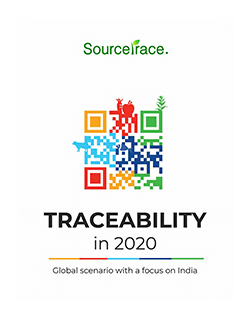Modern technology for carbon verification and tackling GreenHouse Gas emissions

The battle against climate change requires accurate tracking of greenhouse gas (GHG) emissions. This piece delves into the role of cutting-edge technology like digital monitoring and reporting systems, as well as the broader picture of GHG emissions, especially in agriculture. We’ll also touch on the emerging players in the market and how companies like SourceTrace are making a difference.
Understanding GHG Emissions and Their Importance
Greenhouse gases (GHGs) are a group of compounds that have the ability to trap heat or infrared radiation in the Earth’s atmosphere. This heat-trapping phenomenon, while natural and necessary for life as we know it, has been exacerbated by human activities, leading to more GHGs in the atmosphere and consequently, global warming. Among the multiple sources of GHGs, the agriculture and food sector stand out as a notable contributor. This sector encompasses everything from crop cultivation to livestock rearing, and even to the transportation of produce across global supply chains. Each of these activities releases varying amounts of GHGs. As we march towards an era where sustainability is paramount, monitoring and understanding these emissions become crucial. It’s not just about identifying the problems but also about crafting informed solutions. By keeping a close eye on these emissions, we can set tangible targets, make informed decisions, and chart our journey towards a more sustainable and eco-friendly future.
Tapping into Modern Technology for Carbon Verification
In today’s rapidly evolving technological landscape, we have at our disposal a suite of advanced tools that can remarkably refine our understanding of carbon dynamics. Digital monitoring systems and remote sensing technologies, for instance, have revolutionized the way we perceive and analyze the environment. These are no longer restricted to scientific research but have found applications in real-world scenarios. Platforms, such as DATAGREEN, are at the forefront of this integration. They harness the power of these advanced tools to extract essential information from forests, including intricate details like canopy coverage, species diversity, and the amount of carbon stored in various forest layers. As the data is collected and analyzed, it’s transformed into actionable insights. This level of detailed observation and analysis means we can now pinpoint where carbon is being absorbed and released. By refining these measurements and ensuring their precision, we aren’t just gathering data; we’re laying the groundwork to devise better strategies to mitigate our collective carbon footprint and move towards a more sustainable coexistence with nature.
The Dual-Faceted Impact of Agriculture on GHG Emissions
Agriculture is undoubtedly one of humanity’s most essential innovations. It feeds billions and offers employment to a substantial portion of the world’s population. It is the backbone of many economies and is deeply intertwined with our culture, history, and way of life. However, this monumental sector also casts a long shadow on our environment. When we look deeper into the world of agriculture, we find it as one of the substantial contributors to greenhouse gas (GHG) emissions. Activities such as tilling, usage of synthetic fertilizers, livestock rearing, and rice cultivation release vast amounts of GHGs into the atmosphere. Additionally, the clearing of forests to make way for farmland and the energy-intensive processes of storing and transporting agricultural produce further compound its carbon footprint. As we transition into an era of heightened environmental awareness, it’s imperative to identify and address these emission sources. By innovating and adopting sustainable farming methods, shifting to greener agricultural technologies, and understanding the full scope of our food’s journey from farm to table, we can make significant strides in diminishing the environmental impact of this crucial sector.
Key Players in Tackling GHG Emissions
Across the globe, a diverse group of players, from nimble startups to established multinational corporations, are spearheading the battle against GHG emissions. Recognizing the gravity of the climate crisis, these entities are channeling resources into innovative technologies and sustainable practices aimed at not just measuring, but also significantly reducing and compensating for these emissions. Among the trailblazers in this domain is SourceTrace, which has been making waves with its avant-garde solutions. Their efforts underscore a larger trend: a collaborative push towards a greener, more sustainable future where technology and foresight converge to tackle one of the era’s most pressing challenges.
Carbon Farming and Its Potential
One of the promising strategies emerging in the fight against climate change is carbon farming. This approach capitalizes on the planet’s natural processes to capture and store atmospheric carbon. By embracing practices that not only store carbon but also reduce GHG emissions – such as sustainable forest management, conservation tillage, and reforestation – we can make a positive dent in our global carbon footprint. Moreover, as these practices become mainstream, they will also promote biodiversity, enhance soil health, and provide additional economic opportunities for farmers and land managers.
Navigating the Carbon Credit Landscape
Carbon credits serve as an innovative solution to quantifying and rewarding carbon reduction efforts. Think of them as tokens, each symbolizing a tangible reduction in GHG emissions. These credits can be bought, sold, or traded across various platforms, creating a financial incentive for sustainable practices. The landscape is divided mainly into two markets: the compliance markets, where industries are mandated by regulations to offset their carbon emissions, and voluntary markets, where entities proactively choose to neutralize their carbon footprint. As we navigate the complexities of climate change, these markets, backed by clear standards and transparency, will become instrumental in driving investments towards sustainable initiatives and shaping a resilient, green economy.
Conclusion
Embracing technology is vital to tackle the mammoth task of reducing GHG emissions. By understanding the sources and nuances of these emissions, particularly in sectors like agriculture, and by adopting sustainable practices, we pave the way for a brighter, greener future.
SourceTrace's software solutions have been deployed across 37 countries and 4 continents already. We are on a mission to make agriculture and food systems more sustainable. Get in touch and we will extend our expertise and commitment to you.
Request a Demo


